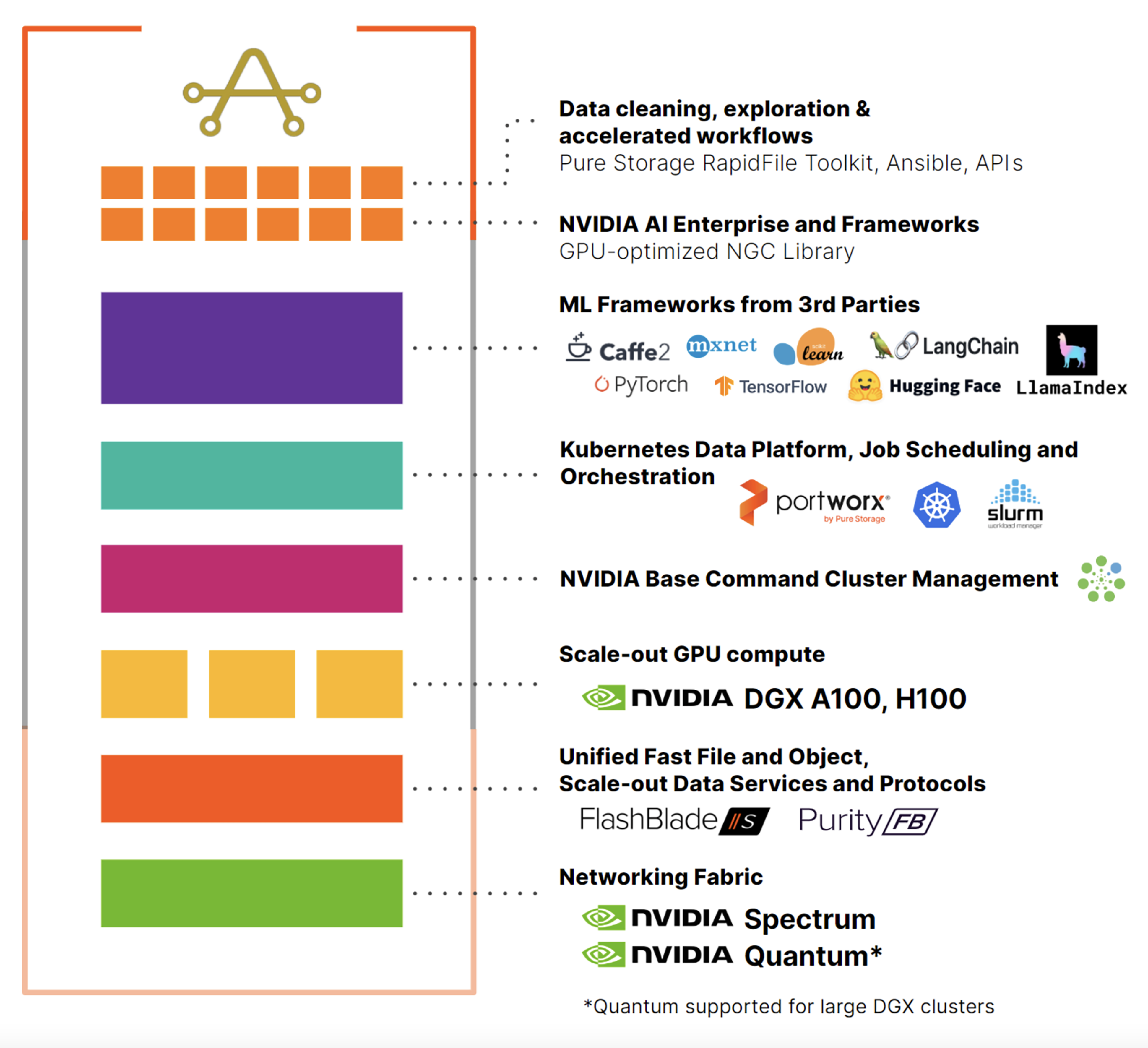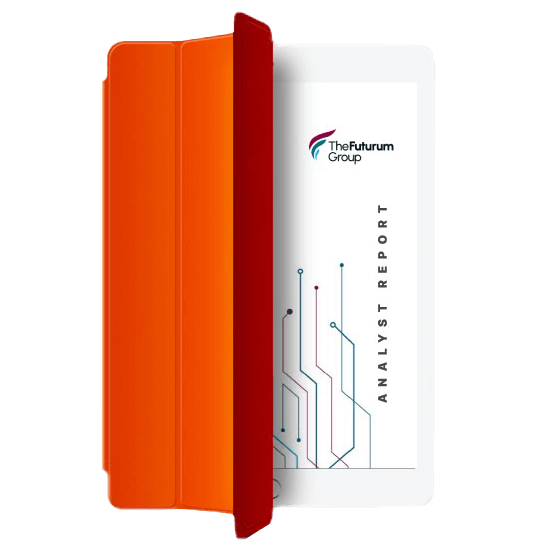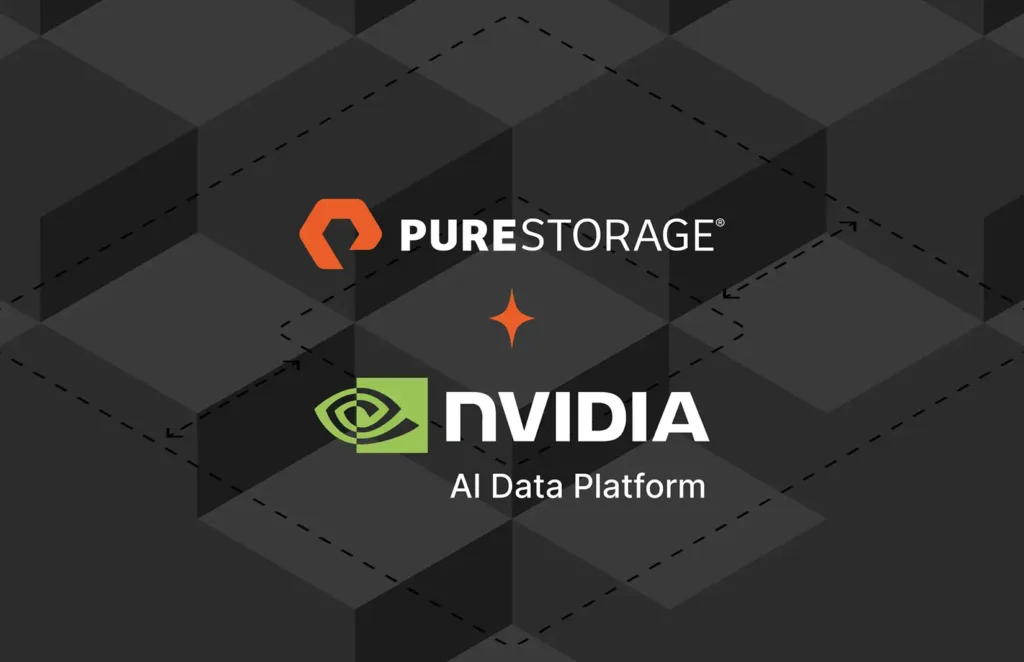The deployment of AI is a major challenge with many different choices when it comes to technology and infrastructure—but now, customers can bypass painful build-it-yourself solutions with the AIRI® reference architecture certified with NVIDIA DGX BasePOD.
In 2018, Pure Storage pioneered the concept of AI-ready infrastructure (AIRI) to simplify AI technology deployments. AIRI® is a proven, validated compute, storage, and network stack that is optimized for AI. Today, AIRI built on NVIDIA DGX BasePOD offers a prescriptive AI infrastructure for enterprises, reducing the design challenges, lengthy deployment cycle, and management complexity traditionally associated with scaling AI infrastructure.
This certification ensures a validated, enterprise-grade full-stack solution that is simple to use, fast, efficient, and future-proofed to meet your AI demands. NVIDIA Base Command, NVIDIA AI Enterprise, and Pure Storage® Purity//FB operating environment provide the essential foundation for AI development optimized for enterprise businesses.
Hold On! What about AI in the Cloud?
Cloud is certainly a top consideration for AI projects, especially in exploratory or pilot phases. Is it easy? It certainly can be, but the more complex and large your AI project becomes, AI in the cloud can become trickier. Paying for large amounts of data in the cloud at scale and at production levels can become quite costly. Availability can be a consideration as well.
Consider pros and cons as well as a TCO analysis to understand the costs of various components including GPUs, storage, and networking in the cloud versus on premises. Pure Storage can help you with this.
What makes AIRI different from other AI infrastructure solutions?
The difference between Pure Storage AIRI and other solutions is of course the Pure Storage components of the stack:
- FlashBlade//S™ is the most efficient, scale-out, unified fast file and object storage platform for AI. It enables NVIDIA DGX systems to ingest large amounts of data quickly so data teams can train, infer, and execute AI and deep learning models as efficiently as possible. FlashBlade//S integrates with the DGX BasePOD architecture and lowers overall storage fabric management overhead. It was designed to scale with your workloads, so as you grow your cluster, capacity and performance can be added, non-disruptively, one blade at a time or many blades at once. Scale while maintaining a consistent and reliable data delivery to the cluster via a single IP with access to the entire FlashBlade//S storage namespace and every blade in the cluster.
- RapidFile Toolkit acts as a supercharger for your Linux file utility commands. Sounds boring, until you imagine accelerating routine file administration activities by 20x-80x! Learn how to make your data teams faster and more productive with RapidFile Toolkit.
- Pure1® is an AI-driven SaaS storage management platform that enables you to plan for future performance and capacity needs, optimize your energy efficiency, and secure your critical data at no extra cost.
- Evergreen® offers the most comprehensive data storage subscriptions in the industry, providing unequaled choice and flexibility in how you purchase and consume storage. You can start small and grow non-disruptively to petabyte-scale. Choose from CAPEX or OPEX options with a proven, non-disruptive Evergreen architecture that is unique in the industry.
Highlights from the AIRI Reference Architecture

Speed your AI journey with AIRI, certified with NVIDIA DGX BasePOD. Download the AIRI Reference Architecture and Configuration Guide for technical details, or learn more about AIRI and Pure Storage AI solutions from the following resources:

Written By:
Learn More
Get the technical details in the AIRI Reference Architecture and Guide.








